Satwant Singh-Kehar Singh chant ‘Jo Bole So Nihal’ embracing gallows
“Jo Bole So Nihal” chant of Satwant Singh and Kehar Singh greeting each other and boldly hosting the Sikh war cry rends the air in Tihar in the early morning hours of 6 January 1989, while the jail inmates were still sleeping, their families are waiting outside the prison and Sikhs across the world were protesting and praying. Political activist Kanwar Pal Singh recounts the final hours of the Sikh martyrs while reviewing the book ‘Black Warrant’ penned by Tihar jail official Sunil Gupta.
![“Jo Bole So Nihal” chant of Satwant Singh and Kehar Singh greeting each other and boldly hosting the Sikh war cry rends the air in Tihar in the early morning hours of 6 January 1989, while the jail inmates were still sleeping, their families are waiting outside the prison and Sikhs across the world were protesting and praying. Political activist Kanwar Pal Singh recounts the final hours of the Sikh martyrs while reviewing the book ‘Black Warrant’ penned by Tihar […]](https://www.theworldsikhnews.com/wp-content/uploads/2020/02/Satwant-Singh-Kehar-Singh-Shaded-Slider-360x266.jpg)
THE CONTEMPORARY HISTORY OF TIHAR JAIL RECORDS THAT SATWANT SINGH AND KEHAR SINGH -THE ‘TWO SIKH MARTYRS’ as the community extolled them, while on the scaffold chanted ‘Jo Bole So Nihal’, prior to embracing the gallows, before the black cloth, was put on to cover their faces.
In true Sikh tradition, in the face of imminent death, ‘Jo Bole So Nihal!’ was chanted recalls Tihar jailer Sunil Gupta in his book Black Warrant, co-authored with senior journalist Sunetra Chaudhury, which details the final minutes of the duo accused in the Indira Gandhi assassination case.
In the 35 years of his career in Tihar, Sunil Gupta witnessed hanging of Billa and Ranga in 1982, Maqbool Butt in 1984, Kartar Singh and Ujagar Singh in 1985, Satwant Singh and Kehar Singh in 1989 and Afzal Guru in 2013.
The ‘Jo Bole So Nihal’ chanted by Satwant Singh Kehar Singh continues to reverberate in the community to this day as the community cherishes their martyrdom.
In December 1984, Tihar prepared itself to receive Kehar Singh, Satwant Singh and Balbir Singh to stand trial for the most high-profile case of the assassination of Indira Gandhi- the then Prime Minister of the country.
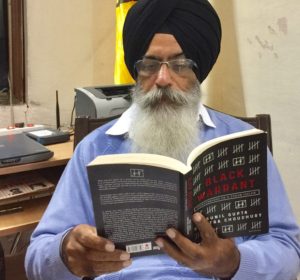
In an unprecedented manner, for the first time in the history of Tihar, the jail authorities set up a court inside the jail premises following a security assessment that the daily transport of the accused of court appearances was too much of a security threat for the government to handle.
Defence counsels P N Lekhi, R S Sodhi and Ram Jethmalani argued in the Supreme Court that a trial inside Tihar was the antithesis of an open trial but to no avail.
The courtroom was set up in the jail superintendent’s office in Jail No. 3. The accused were brought from Jail 1 to Jail 3 by a van that ferried them back and forth. For the first time, there were bulletproof enclosures for the Additional Sessions Judge Mahesh Chandra, the witnesses and the accused standing trial.
“We have a long list of complaints against him (the judge), Kochchar told the jailer, “If he doesn’t give the ruling, we (read the state) want, then we will reveal everything”.
Gupta writes that Judge Mahesh Chandra was deeply uncomfortable despite the bulletproof cordon that was made especially for him. Judge Mahesh Chandra was too scared. The jailer admits that Judge was under considerable pressure from various quarters.
“When Satwant Singh and Kehar Singh complained in the court that they were kept in isolation and that they were mistreated or even beaten (and they often were), Judge Chandra would confer with us before that hearing to discuss what he was going to ask us and what our appropriate answers should be- ‘If I say this, then you should say that.”
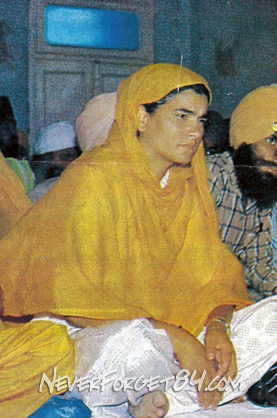
How would the state choose a judge for a political case like this, as the state too was aware that the overall evidence to hang Kehar Singh and Balbir Singh, to say the least, was only flimsy?
Well, the book makes a startling revelation exposing India’s justice system. Quoting Assistant Commissioner of Police Rajendra Prasad Kochchar, Gupta reveals that the judge Mahesh Chandra was chosen so that he would take the prosecution’s side and not bother too much about propriety. “We have a long list of complaints against him (the judge), Kochchar told the jailer, “If he doesn’t give the ruling, we (read the state) want, then we will reveal everything”.
‘I killed her, I don’t know why P N Lekhi is saying what he is, but I did kill her!’.
Citing deep flaws in the Indian criminal jurisprudence system, Gupta admits that the common belief was that if the victim had been anyone other than Mrs Gandhi, all the accused would have been acquitted. This perception was widely admitted and discussed throughout the Sikh world too.
The evidence against Kehar Singh, in particular, was nothing but a farce. One major reason, Sunil Gupta cites is that the main shooter Beant Singh was killed on the spot. With his death, the primary source of the killer’s motivation and details of the assassination plot were lost. Further, the police made his wife Bimal Kaur Khalsa their prime witness so that she would support their claims against Kehar Singh. The author has narrated that there were many aspects of the case which were deeply erroneous but the Supreme Court of India failed to acknowledge them.
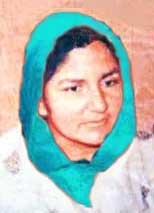
Gupta says that, from the day of his arrest, 22-year-old Satwant Singh was very violent and would lash out and injure jail guards. As he was sometimes violent in court too, the judge too was under tremendous pressure.
Significantly, he did not even spare his lawyer. During court proceedings, when Advocate P N Lekhi pleaded for Satwant Singh’s innocence, calling the assassination an international conspiracy, Satwant would shout, ‘I killed her, I don’t know why P N Lekhi is saying what he is, but I did kill her!’.
The author describes Satwant Singh as “Gabru Jawan.” At that point, from his behaviour, Satwant Singh seemed to be clear of what he had done. Once his anger subsided after a while, Satwant Singh -who used to attack his security guards, started spending time walking or playing a game of football with them. The Jail authorities allowed families of the three to bring food for them from home and even have lunch with them in their cells.
His prison cell was like a hospital room as he had undergone many surgeries.
Citing deep flaws in the Indian criminal jurisprudence system, Gupta admits that the common belief was that if the victim had been anyone other than Mrs Gandhi, all the accused would have been acquitted. This perception was widely admitted and discussed throughout the Sikh world too.
Meticulous planning by the jail authorities in such high-profile cases is comprehensively documented. A young teenaged Lakhiram, who was a confidante of an IB officer -the son of one of the peons at the IB office, was assigned to be a cook for Satwant Singh, as the prison authorities were wary of poisoning by other prisoners.
The jailer says that Kehar Singh was like a government bureaucrat. Quiet and decent, he gave no trouble to anyone. He was like a religious preacher -spending his time reading books of faith or just whiling away in bed.
Sunil Gupta is unsparing of Balbir Singh -a Delhi police sub-inspector, whom he describes as a person who was full of non-stop nonsense. Lodged next to Kehar Singh’s cell in ward number 8, his conviction was based on the police story alone, which hinged on the theory that in the first week of September, he had a sighting (seeing of Baaz-falcon), which goaded him to carry out the killing of Mrs Indira Gandhi.
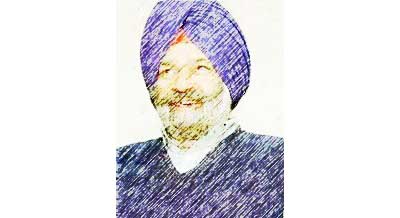
Gupta opines that it was his behaviour of bragging which led to his conviction by the trial court. Fortunately, the Supreme Court overturned the judgement and acquitted him, though the Indian Intelligence Bureau was very upset and taken aback with the order of the apex court.
Kehar Singh and Balbir Singh were lodged in a separate area of the same jail where Satwant Singh was kept.
Gupta opines that it was Balbir Singh’s behaviour of bragging which led to his conviction by the trial court. Fortunately, the Supreme Court overturned the judgement and acquitted him, though the Indian Intelligence Bureau was very upset and taken aback with the order of the apex court.
As the date of hanging came closer, Satwant grew quieter and hardly ate much, observes the jailer. While Kehar Singh’s family kept pushing one mercy petition after another but Satwant said only God had the authority to judge him and no one else.
On the designated day -6 January 1989, the same two men who had abused Judge Chandra for sentencing them to death could not be recognized. They were quiet and pondering over what was apparent and imminent.
After reading his religious scriptures, Kehar Singh asked the author, who was a law officer if anything could be done to save him. Satwant said no such thing. Gupta wrote: “I remember the last black look on their faces and then, they were gone, suddenly.”
The government decided to not hand over the bodies to their family members. They were cremated next to Jail 3 as the Municipal Corporation of Delhi had declared that piece of land as a cremation ground. Later on, the jail authorities organized a trip to Haridwar for the families accompanied by a senior police officer and jail deputy superintendent to immerse the ashes of both.
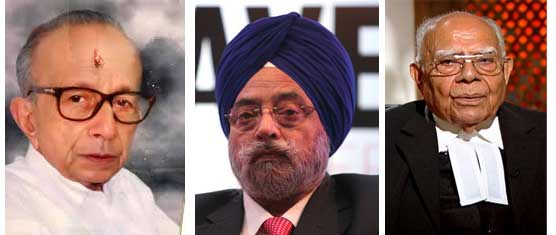
Gupta felt amazed that the families of Satwant Singh, Kehar Singh and Balbir Singh were unfazed and the Sikh community never abandoned the three accused. He surmised that their community identified strongly with the cause and deed of Satwant Singh and Kehar Singh. Express awe at the community support, he writes, “Whatever their reasons, the family and community never gave up on these men.”
‘I killed her, I don’t know why P N Lekhi is saying what he is, but I did kill her!’.
The jailer didn’t miss to mention that the Akal Takht Sahib -the Supreme temporal authority of the Sikhs, declared both as martyrs.
The ‘Jo Bole So Nihal’ chanted by Satwant Singh Kehar Singh continues to reverberate in the community to this day as the community cherishes their martyrdom.
